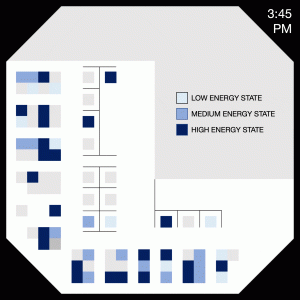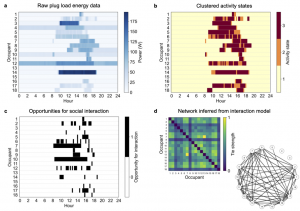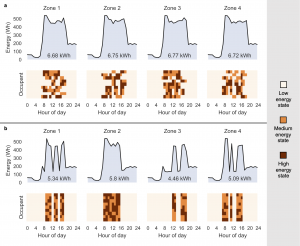In many countries around the world, we spend the vast majority of our time indoors. As a result, the design and operation of buildings impacts our experiences and outcomes (e.g., well-being, productivity). This building-human relationship is not one sided, however: human behavior is the largest factor in driving energy consumption in buildings. An important area for research is how we can best design buildings—or make interventions in existing buildings—to support both energy efficiency and positive occupant experiences. How can we use modern sensing tools to understand social dynamics in buildings? How does the spatial design of the building influence our experiences? How can we change the layouts of buildings to address our social and environmental goals?
Key publications
| Andrew Sonta, Perry E. Simmons, and Rishee K. Jain. Understanding building occupant activities at scale: An integrated knowledge-based and data-driven approach. Advanced Engineering Informatics, 37:1-13, 2018.
A method for mapping ambient plug-load energy signatures into desk-level building occupancy patterns |
 |
| Andrew Sonta and Rishee K. Jain. Learning socio-organizational network structure in buildings with ambient sensing data. Data-Centric Engineering, 1:e9, 2020.
A method for learning occupant network structure based on inferred use patterns within the building |
 |
| Andrew Sonta, Thomas R. Dougherty, and Rishee K. Jain. Data-driven optimization of building layouts for energy efficiency. Energy and Buildings, 238:110815, 2021.
An investigation into optimizing seating arrangements so that lighting systems can run as efficiently as possible |
 |